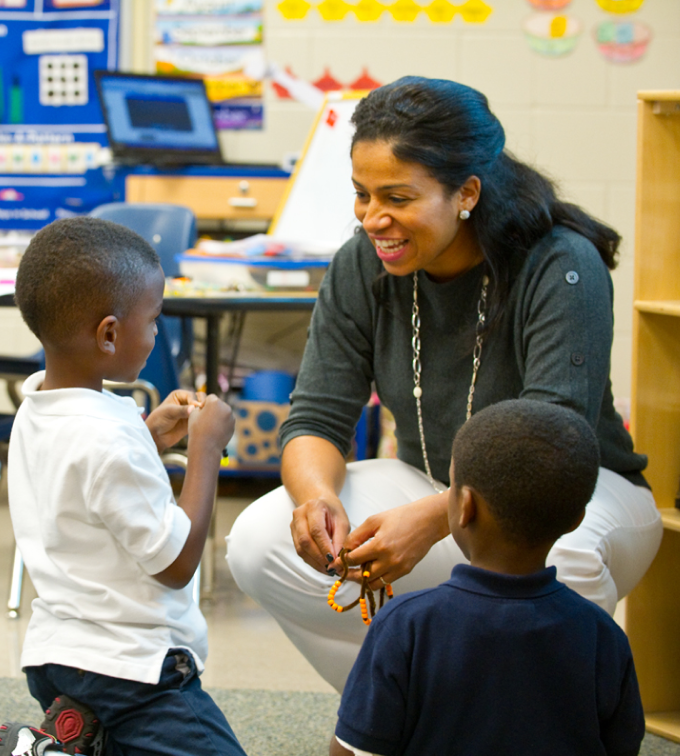Boost Your Child’s Confidence with Primary Science Tuition Singapore
Wiki Article
Exploring the Different Mentor Approaches in Main Scientific Research Education And Learning Today
The landscape of primary science education and learning is evolving, with different teaching methods getting prominence in modern classrooms. Inquiry-based discovering, hands-on experiments, and the assimilation of innovation are redefining exactly how educators involve young minds. In addition, joint strategies and separated instruction are being utilized to accommodate the diverse requirements of pupils, enhancing both interaction and understanding. As we check out these approaches, inquiries develop concerning their effectiveness and the ramifications for future educational methods. What might these shifts in strategy mean for the next generation of learners?Inquiry-Based Knowing
Inquiry-Based Learning (IBL) is an instructional approach that motivates trainees to check out scientific concepts through wondering about, examination, and hands-on testing. This method emphasizes the role of trainees as energetic individuals in their understanding, advertising critical reasoning and problem-solving abilities. By involving with real-world inquiries, students become interested and motivated, which improves their understanding of clinical concepts.In IBL, instructors act as facilitators, assisting students as they browse their queries instead of supplying information directly. This student-centered strategy enables for differentiation, fitting different discovering speeds and styles. Trainees create abilities in creating theories, designing experiments, and examining information, which are vital for scientific proficiency.
Additionally, IBL cultivates collaboration amongst trainees, encouraging them to share findings and concepts. This collective inquiry advertises social abilities and a sense of community within the class. The process of query motivates durability, as trainees learn to welcome failing as a tipping rock towards understanding.
Hands-On Experiments
Hands-on experiments are a crucial element of efficient science education and learning, enhancing the principles of inquiry-based understanding. These experiments permit pupils to involve directly with clinical ideas, promoting a deeper understanding through experiential understanding. By manipulating products and observing outcomes, young students can grasp abstract theories in concrete methods.Such tasks advertise essential reasoning and problem-solving skills, as pupils hypothesize outcomes, conduct experiments, and assess results. This procedure encourages them to ask questions, fine-tune their understanding, and develop a scientific state of mind. In addition, hands-on experiments can be customized to varied learning designs, making sure that all pupils have the possibility to engage meaningfully with the content.
Additionally, hands-on experiments frequently urge cooperation amongst peers, advertising team effort and communication skills. Operating in teams enables pupils to share ideas, go over searchings for, and discover from each other, which enhances their overall academic experience.
Including hands-on experiments right into the primary scientific research educational program not just improves the discovering setting but likewise grows a lifelong rate of interest in science. By actively taking part in their education and learning, pupils are more probable to develop an enthusiasm for scientific query that prolongs past the classroom.

Innovation Assimilation
Integrating innovation right into key scientific research education has ended up being progressively important in fostering trainee interaction and enhancing finding out results. Using electronic tools, such as interactive simulations, online labs, and academic software application, offers pupils with opportunities to explore clinical concepts in cutting-edge methods. These sources assist in a much deeper understanding of complex subjects by permitting learners to imagine and manipulate variables that would be not practical in a traditional classroom setup.Additionally, innovation combination motivates customized finding out experiences. Pupils can progress at their own rate, taking another look at difficult ideas via multimedia resources, which cater to various understanding styles. This versatility not only sustains individual development yet additionally cultivates a sense of autonomy in students.
Furthermore, innovation works as a bridge to real-world scientific research, linking pupils with current research study and expert payments. Access to on the internet data sources and clinical journals widens pupils' viewpoints on scientific query and fosters crucial thinking abilities.
Collaborative Learning
Collaborative learning plays a crucial role in main science education by cultivating team effort and interaction skills amongst students. This technique motivates students to collaborate, share expertise, and take part in problem-solving, which enhances their understanding of clinical principles. By participating in group activities, pupils find out to verbalize their ideas, pay attention to diverse perspectives, and negotiate options, all of which are important skills in both real-world and academic contexts.
useful content
Research study indicates that joint understanding can cause raised motivation and engagement in scientific research subjects, as pupils discover enjoyment in shared experiences (primary science tuition Singapore). Additionally, this approach prepares trainees for future joint endeavors, equipping them with the skills essential for reliable teamwork in college and professional settings. Ultimately, embracing collaborative discovering in primary science education and learning can considerably enhance the learning experience and advertise a much deeper understanding of scientific inquiry
Differentiated Instruction

Set apart instruction can manifest in numerous ways, such as differing the web content, procedures, or products of understanding. For circumstances, educators may use tiered projects that supply varying levels of complexity, allowing pupils to function at their particular preparedness degrees. In addition, versatile grouping methods can promote partnership amongst trainees with different capacities, cultivating peer learning.
Assessment plays a critical duty in this technique, as it educates direction and assists educators recognize each trainee's special requirements. Formative evaluations, such as tests and monitorings, can lead educators in readjusting their approaches to boost learning outcomes. primary science tuition Singapore. Inevitably, by carrying out differentiated direction in main scientific research education and learning, teachers can grow a more fair and efficient learning setting, equipping all students to reach their complete potential in recognizing scientific sensations
Verdict
In summary, the varied teaching methods in key science education and learning, consisting of inquiry-based understanding, hands-on experiments, technology assimilation, collaborative knowing, and separated instruction, collectively add to a much more reliable discovering environment. These approaches advertise important thinking, analytic abilities, Source and a deeper understanding of clinical ideas. By applying these strategies, educators can develop appealing and helpful classrooms that resolve the diverse requirements of pupils, inevitably promoting a lifelong passion in science and enhancing scholastic achievement.Inquiry-Based Understanding (IBL) is a pedagogical technique that encourages trainees to explore scientific principles through wondering about, investigation, and hands-on experimentation.Collective knowing plays an essential function in main science education by fostering synergy and communication abilities amongst trainees.Research study indicates that collaborative understanding can lead to raised motivation and engagement in science topics, as trainees discover enjoyment in shared experiences.In promoting a comprehensive discovering atmosphere, distinguished guideline emerges as a crucial method to accommodate the varied demands and capabilities of students in key science education and learning. Inevitably, by implementing set apart instruction in main scientific research education, teachers can grow a more fair and effective knowing environment, equipping all students to reach their complete capacity in recognizing clinical sensations.
Report this wiki page